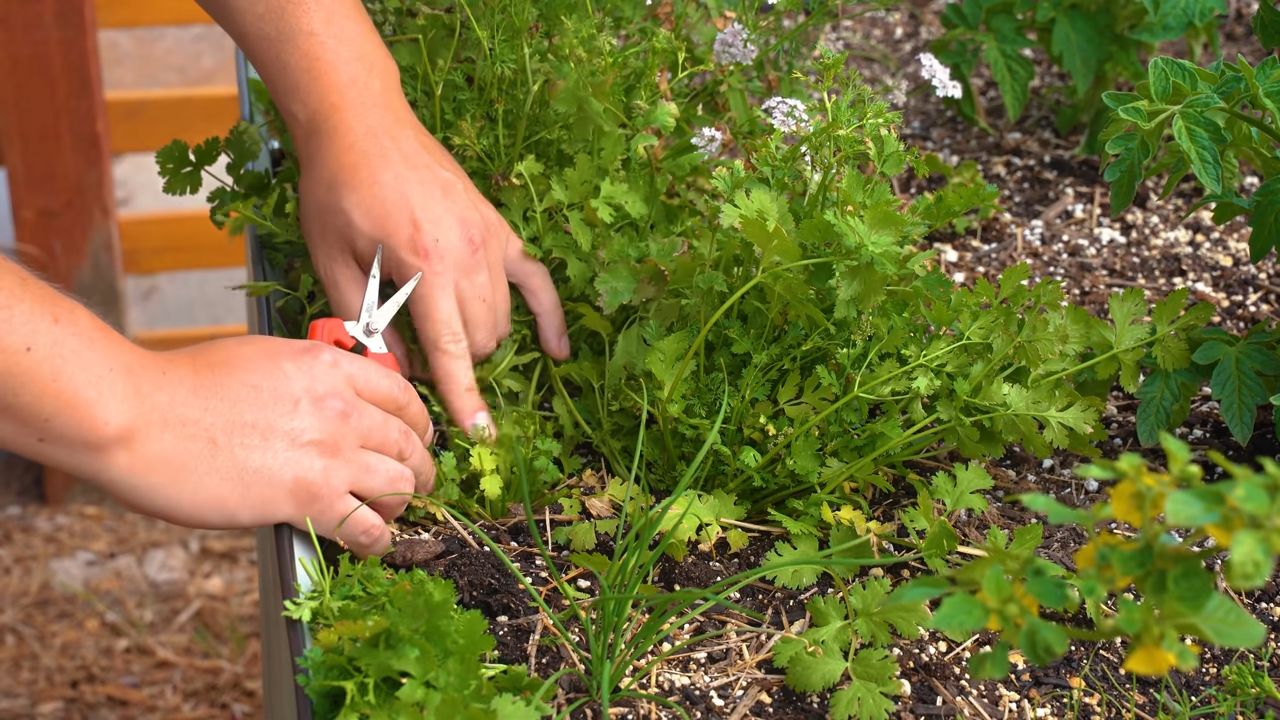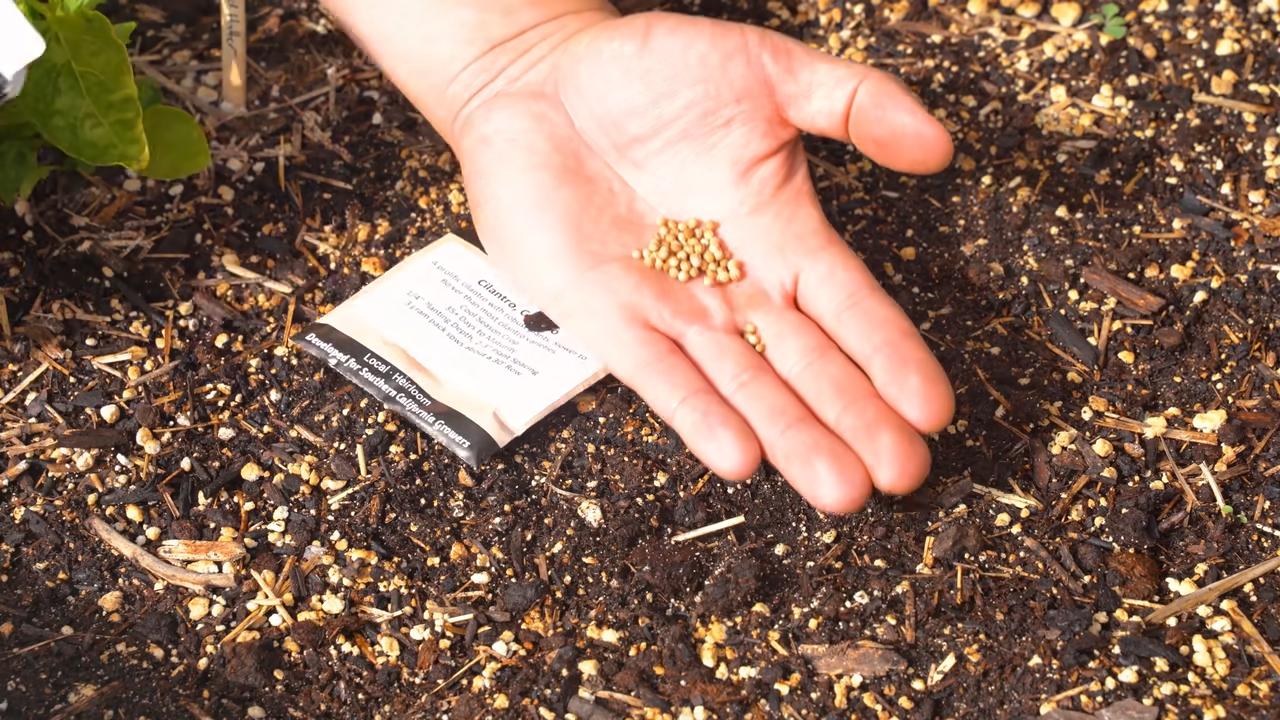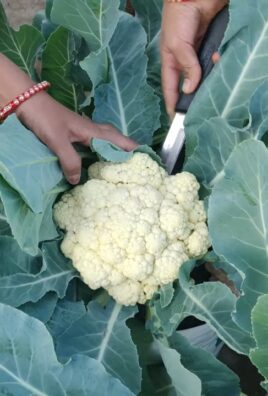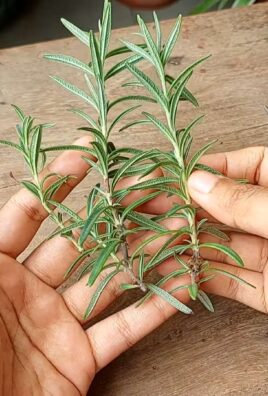Growing Cilantro at Home can feel like a culinary quest, especially when you’re craving that fresh, zesty flavor in your tacos or guacamole. But what if I told you that achieving cilantro abundance is easier than you think, even if you don’t have a sprawling garden? For centuries, cilantro, also known as coriander in some parts of the world, has been a staple in cuisines from Mexico to India, adding a vibrant touch to countless dishes. Its use dates back to ancient Egypt, where it was even found in tombs!
Let’s face it, buying cilantro from the grocery store often means wilted leaves and a hefty price tag for a small bunch. That’s where the magic of DIY comes in! This article is your ultimate guide to mastering the art of growing cilantro at home, offering simple yet effective tricks and hacks that will transform your kitchen windowsill or balcony into a thriving herb garden. Imagine having a constant supply of fresh, fragrant cilantro right at your fingertips, ready to elevate your meals with its unique flavor. No more sad, store-bought cilantro – just vibrant, homegrown goodness. Ready to get started? Let’s dive in!

Growing Cilantro at Home: Your Comprehensive DIY Guide
Hey plant friends! Cilantro, also known as coriander, is a herb that is either loved or hated. Personally, I love it! And the best part? It’s super easy to grow at home, whether you have a garden, a balcony, or just a sunny windowsill. In this article, I’ll show you step-by-step how to grow your own cilantro so you always have fresh herbs on hand for your tacos, curries, and guacamole. Let’s get started!
What You Need: The Right Equipment and Materials
Before we begin, let’s make sure you have everything you need. Here is a list of the most important things:
- Cilantro seeds: You can buy them at any garden center or online. Make sure they are fresh to ensure a good germination rate.
- A planter: Choose a pot with good drainage. Cilantro does not like waterlogged soil. A pot that is at least 15 cm (6 inches) in diameter and depth is ideal.
- High-quality potting soil: Use a well-draining potting soil. A mixture of potting soil, compost, and perlite is perfect.
- A watering can or spray bottle: For gently watering the seeds and young plants.
- Sunlight: Cilantro needs at least 6 hours of sunlight per day.
- Optional: A grow light, if you don’t have enough sunlight.
- Optional: Liquid fertilizer for herbs.
The Preparation: The Key to Success
Proper preparation is crucial for the success of your cilantro project. Here are the steps you should follow:
- Prepare the seeds: Cilantro seeds are actually small fruits that contain two seeds. To speed up germination, you can lightly press the seeds or gently crush them with a rolling pin. This separates the seeds and promotes germination. But be careful not to crush them too hard!
- Prepare the pot: Fill the pot with potting soil. Leave about 2-3 cm (1 inch) of space to the rim. Press the soil down lightly, but not too firmly.
- Watering: Moisten the soil thoroughly before you sow the seeds. The soil should be damp, but not wet.
The Sowing: The Start of Your Cilantro Garden
Now comes the exciting part: sowing! Here’s how you do it:
- Sow the seeds: Distribute the prepared cilantro seeds evenly on the surface of the soil. Make sure they are not too close together, as they need space to grow. A distance of about 2-3 cm (1 inch) between seeds is ideal.
- Cover with soil: Cover the seeds with a thin layer of soil (about 0.5 cm or ¼ inch). Press the soil down lightly.
- Watering: Gently spray the surface of the soil with water to moisten the seeds. Avoid watering too heavily, as this can wash the seeds away.
- Choose a location: Place the pot in a sunny spot. Cilantro needs at least 6 hours of sunlight per day. If you don’t have enough sunlight, you can use a grow light.
The Care: Keeping Your Cilantro Happy and Healthy
Care is crucial to ensure your cilantro grows well. Here are the most important things to pay attention to:
- Watering: Keep the soil moist, but not wet. Water when the top layer of soil feels dry. Avoid waterlogging, as this can lead to root rot. It’s best to water in the morning so the leaves can dry during the day.
- Sunlight: Make sure your cilantro gets enough sunlight. If the leaves turn pale or the plant becomes long and thin, it needs more light.
- Fertilizing: Fertilize your cilantro every few weeks with a liquid fertilizer for herbs. Follow the instructions on the packaging.
- Pests and diseases: Cilantro is relatively resistant to pests and diseases. However, watch out for aphids or other pests. If you spot any, you can combat them with an insecticide based on neem oil.
- Preventing bolting: Cilantro tends to flower quickly, especially in hot weather. When it flowers (bolts), the leaves become bitter. To prevent bolting, you should regularly remove the flower buds. You can also try placing your cilantro in a cooler spot.
The Harvest: Enjoy Your Homegrown Cilantro
After about 4-6 weeks, you can harvest your cilantro! Here’s how to do it:
- Harvesting: Cut the leaves with scissors or a knife. Cut the stems just above the soil so the plant can continue to grow.
- Regular harvesting: Harvest your cilantro regularly to prevent bolting and to encourage the growth of new leaves.
- Storage: Fresh cilantro will keep in the refrigerator for about a week. You can also freeze or dry it to make it last longer.
Common Problems and Solutions
Problems can also arise when growing cilantro. Here are some common issues and how to solve them:
- Problem: Cilantro bolts quickly.
- Solution: Remove the flower buds regularly. Place the cilantro in a cooler location.
- Problem: Yellow leaves.
- Solution: Check your watering. Too much or too little water can lead to yellow leaves. Make sure the cilantro is getting enough sunlight.
- Problem: Slow growth.
- Solution: Fertilize the cilantro regularly. Make sure it is getting enough sunlight.
- Problem: Pests.
- Solution: Combat pests with an insecticide based on neem oil.
Additional Tips and Tricks
Here are a few more tips that can help you optimize your cilantro cultivation:
- Sow regularly: Cilantro is an annual plant, which means it only lives for one year. To always have fresh cilantro, you should sow new seeds every few weeks.
- Use different varieties: There are different cilantro varieties with various flavors and growing conditions. Experiment to find out which variety you like best.
- Grow cilantro in winter: You can also grow cilantro in winter if you keep it in a heated greenhouse or under a grow light.
- Harvest cilantro seeds: When your cilantro flowers and produces seeds, you can harvest the seeds and save them for the next sowing.
Growing Cilantro in Different Containers
You are not limited to a standard pot! Here are a few creative ideas:
Upcycling: Use old cans, buckets, or other containers as planters. Just make sure they have good drainage.
Hanging baskets: Cilantro looks great in hanging baskets and saves space.
Herb garden: Integrate cilantro into your herb garden along with other herbs like basil, parsley, and chives.

Conclusion
So, there you have it! Growing cilantro at home is not only achievable, but it’s also a game-changer for anyone who loves fresh, vibrant flavors in their cooking. Forget those sad, wilted bunches from the grocery store that cost a fortune and seem to disappear within days. With a little patience and these simple steps, you can have a constant supply of this beloved herb right at your fingertips.
Why is this DIY trick a must-try? Because it’s economical, sustainable, and incredibly rewarding. Imagine the satisfaction of snipping fresh cilantro from your own plant to garnish your tacos, add a zing to your salsa, or elevate your Asian-inspired dishes. The flavor is noticeably brighter and more intense than store-bought cilantro, making a world of difference in your culinary creations. Plus, you’re reducing your carbon footprint by avoiding the transportation and packaging associated with commercially grown herbs.
But the benefits don’t stop there. Growing your own cilantro allows you to control the growing conditions, ensuring that your herbs are free from harmful pesticides and chemicals. You know exactly what’s going into your food, giving you peace of mind and a healthier option for your family.
Looking for variations? Consider growing different varieties of cilantro! Some are more heat-tolerant than others, which can be a lifesaver if you live in a warmer climate. Experiment with ‘Slow Bolt’ cilantro, known for its resistance to bolting (going to seed quickly), or try ‘Santo’ cilantro, which offers a robust flavor. You can also try growing cilantro in different containers – from small pots on your windowsill to larger raised beds in your garden. Hydroponic cilantro is also an option for those with limited space or who prefer a soil-free growing method.
Don’t be afraid to experiment with companion planting as well. Cilantro thrives alongside other herbs and vegetables, such as basil, dill, and carrots. These companion plants can help deter pests and improve the overall health of your cilantro plants.
We understand that growing cilantro can sometimes be challenging, especially when it comes to bolting. But with the right techniques and a little bit of attention, you can overcome these hurdles and enjoy a continuous harvest of fresh cilantro. Remember to provide adequate shade during the hottest part of the day, water regularly, and harvest frequently to encourage new growth.
We wholeheartedly encourage you to give this DIY trick a try. It’s a simple, cost-effective way to elevate your cooking and enjoy the fresh, vibrant flavor of homegrown cilantro. Once you experience the difference, you’ll never go back to store-bought cilantro again.
And most importantly, we want to hear about your experience! Share your tips, tricks, and photos with us in the comments below. Let us know what worked for you, what challenges you faced, and any creative ways you’ve found to use your homegrown cilantro. Together, we can create a community of cilantro enthusiasts and inspire others to embrace the joys of growing their own herbs. So, grab your seeds, get your hands dirty, and start growing your own cilantro today! You won’t regret it.
Frequently Asked Questions (FAQ)
Why does my cilantro keep bolting (going to seed)?
Bolting is a common issue with cilantro, especially in warm weather. Cilantro is a cool-season herb, and when temperatures rise, it tends to bolt in an effort to reproduce. To prevent bolting, try these tips:
* Provide Shade: During the hottest part of the day, provide some shade for your cilantro plants. You can use shade cloth, plant them in a location that receives afternoon shade, or even move potted plants indoors.
* Water Regularly: Consistent watering is crucial, especially during hot weather. Dry soil can stress the plants and trigger bolting.
* Harvest Frequently: Regularly harvesting the leaves encourages new growth and can delay bolting. Don’t be afraid to snip off a good amount of foliage.
* Choose Bolt-Resistant Varieties: Opt for cilantro varieties that are known for their resistance to bolting, such as ‘Slow Bolt’ or ‘Santo’.
* Succession Planting: Plant new cilantro seeds every few weeks to ensure a continuous supply of fresh herbs. This way, even if some plants bolt, you’ll have others ready to harvest.
How often should I water my cilantro plants?
The frequency of watering depends on several factors, including the weather, the type of soil, and the size of the container. As a general rule, water your cilantro plants when the top inch of soil feels dry to the touch. During hot weather, you may need to water them daily, while in cooler weather, you can water them every few days. Avoid overwatering, as this can lead to root rot. Make sure your containers have good drainage to prevent water from pooling at the bottom.
What kind of soil is best for growing cilantro?
Cilantro prefers well-draining soil that is rich in organic matter. A good potting mix for cilantro should contain a combination of peat moss, perlite, and vermiculite. You can also amend your garden soil with compost or other organic matter to improve its drainage and fertility. The ideal pH for cilantro is between 6.0 and 7.0.
How much sunlight does cilantro need?
Cilantro needs at least 6 hours of sunlight per day to thrive. However, in hot climates, it can benefit from some afternoon shade to prevent bolting. If you’re growing cilantro indoors, place it near a sunny window or use grow lights to provide adequate light.
Can I grow cilantro indoors?
Yes, you can definitely grow cilantro indoors! Choose a sunny location, such as a windowsill that receives at least 6 hours of sunlight per day. Use a well-draining potting mix and water regularly. You may also need to supplement with grow lights if you don’t have enough natural light. Remember to rotate the pot regularly to ensure that all sides of the plant receive equal light.
How do I harvest cilantro?
Harvest cilantro by snipping off the outer leaves with scissors or pruning shears. Avoid cutting the main stem, as this can stunt the plant’s growth. Harvest frequently to encourage new growth and delay bolting. You can harvest cilantro leaves at any stage of growth, but they are most flavorful when they are young and tender.
What can I do with cilantro seeds (coriander)?
If your cilantro plants do bolt and produce seeds, don’t throw them away! Cilantro seeds, also known as coriander, are a delicious spice that can be used in a variety of dishes. You can harvest the seeds once they turn brown and dry. Simply cut off the seed heads and allow them to dry completely. Then, rub the seed heads between your hands to release the seeds. Store the seeds in an airtight container in a cool, dry place. You can use coriander seeds whole or grind them into a powder.
My cilantro leaves are turning yellow. What’s wrong?
Yellowing cilantro leaves can be a sign of several problems, including:
* Overwatering: Too much water can lead to root rot, which can cause the leaves to turn yellow. Make sure your soil is well-draining and avoid overwatering.
* Nutrient Deficiency: Cilantro may need additional nutrients if the soil is depleted. Try fertilizing with a balanced liquid fertilizer.
* Pests: Check your plants for pests, such as aphids or spider mites, which can suck the sap from the leaves and cause them to turn yellow.
* Sunlight: Insufficient sunlight can also cause yellowing. Ensure your cilantro receives adequate light.
How can I store fresh cilantro?
To store fresh cilantro, trim the stems and place the bunch in a glass of water, just like you would with flowers. Cover the leaves loosely with a plastic bag and store in the refrigerator. Change the water every few days to keep the cilantro fresh for longer. You can also wrap the cilantro in a damp paper towel and store it in a plastic bag in the refrigerator. Another option is to freeze cilantro. Chop the cilantro and place it in ice cube trays with water or olive oil. Once frozen, transfer the cubes to a freezer bag for long-term storage.




Leave a Comment